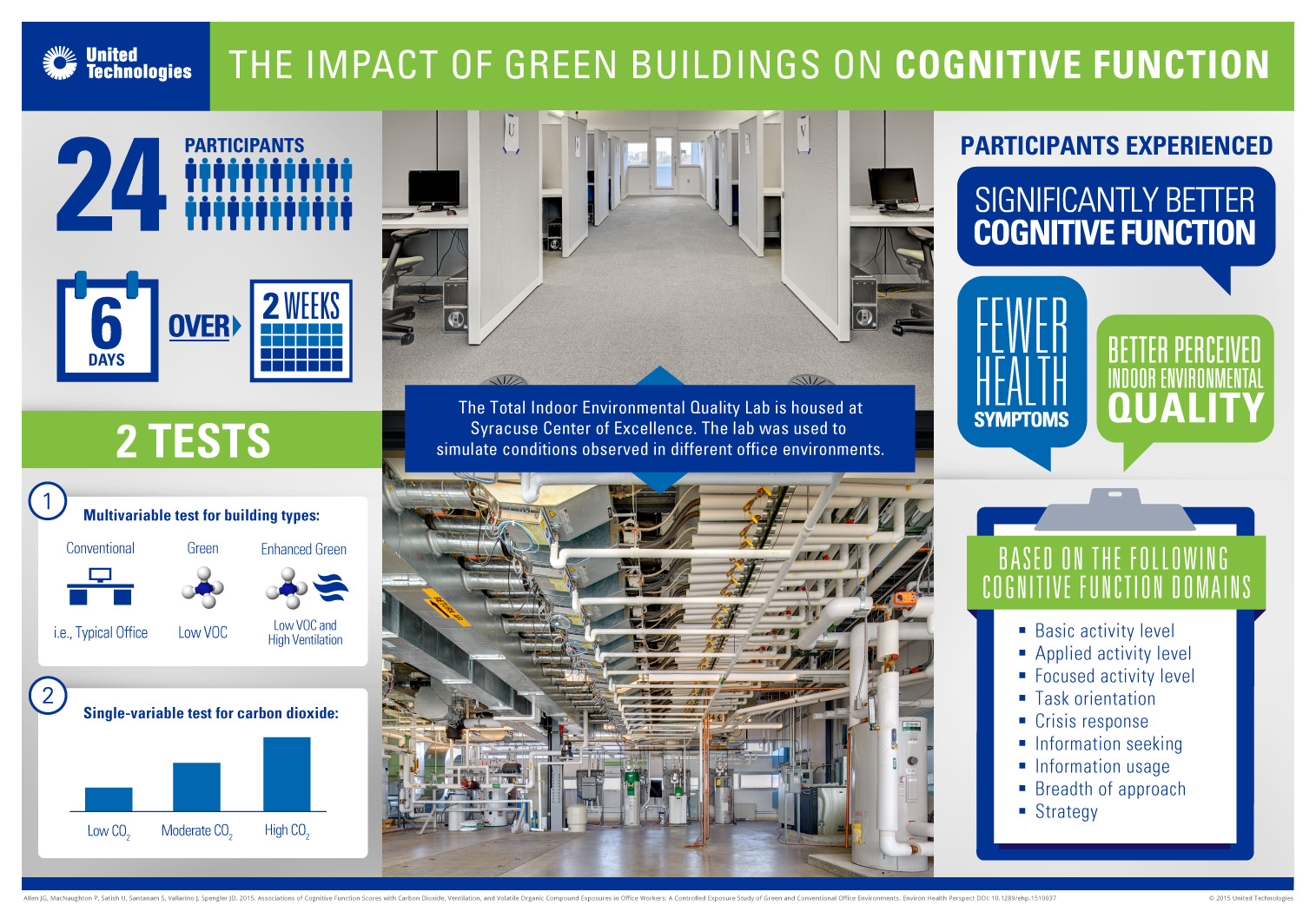Did You Know Green Offices Increase Health, Happiness & Productivity?
Did you know green offices increase health, happiness & productivity? It’s true! Working in an office that has low allergens and high ventilation vastly increases your cognitive functioning. The fact that fresh air is good for you might not strike you as a big shocker, but the history (and slight irony) of how we got to this point might surprise you.
As energy prices increased in the 1970s, new building practices were implemented on residential and commercial structures to make buildings more air-tight and increase energy efficiency. One of the effects of these changes is a dramatic lessening of air circulation with the exterior, which traps air pollutants inside. This set us up for a conundrum; the more successful we are at making our houses and offices air-tight and energy-conscious, the more we see negative effects on our health.
The first building-related illnesses and sick building syndrome (SBS) were reported in the 1980s. The results were significant annual costs and productivity losses due to health problems attributable to the indoor environment.
Once the negative health effects of an air-tight design became established, the search was on for a design that is not only energy-efficient, but also good for a person’s health. This led to the LEED rating system, which began in the mid-1990s. Over the next twenty years, studies began showing that buildings with lower rates of nitrogen dioxide, VOCs and allergens were “associated with reductions in self-reported symptoms in people inhabiting the buildings, and with improved productivity in home, school, and office settings.” However, none of these studies were completed in “blind” settings (the participants knew they were in a green building).
This fact changed with the recent publication from Environmental Health Perspectives, which outlines that not only do poor environmental conditions lead to acute and chronic problems, but in a blind test, green building practices can actually increase mental acuity and thus worker productivity. How much of an increase? In buildings that have green conditions with low VOC concentrations and buildings that have green conditions with enhanced ventilation (called “green+”) versus buildings with relatively high concentrations of volatile organic compounds (VOCs), such as those emitted from common materials in offices, a person showed
- 97% higher scores in green conditions and 131% higher in green+ for crisis response
- 183% higher scores in green conditions and 288% higher in green+ for strategy
- 172% higher scores in green conditions and 299% higher in green+ for information usage
The results paint a clear picture that indoor air quality matters a lot more than we previously thought. And while you might not be able to convince your boss to move into a LEED building, you can suggest smaller steps such as repainting with no-VOC paint* and/or adding indoor plants. Check out a recent post, “5 Facts Everyone Should Know About Indoor Air Quality,” which offers an in-depth list of tips for cleaner indoor air.
*Conforms to CDPH 01350 (VOC emissions test taken at 11, 12, & 14 days for classroom and office use). Learn more about VOCs and our commitment to healthier paints here.


























